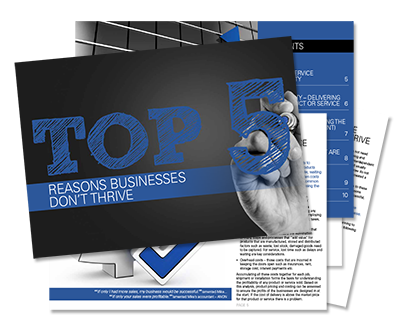Getting back to business as usual can be a futile exercise
Our business world continues to demonstrate that a dynamic environment is one that is continually changing. The events of the last 2-3 years, in my view, provide a demonstration of how waiting for things to “get back to the norm” is a futile exercise, one bound to create more uncertainty and confusion, and potentially overwhelm business owners, managers and employees alike.
Just when Australia was looking for the “new normal” after emerging from the challenges of the COVID19 pandemic, the full impacts of the supply chain disruptions from global system failures and labour shortages in almost every sector started to flow through to increasing prices. Overlay these issues with the high levels of business activity, plus a major energy price spike related to a European “special military operation”, and we have our first sustained period of rising prices in many years.
One of the benefits of Australia’s long, stable period of growth has been the absence of short-term price increases. This has meant that most businesses (including manufacturing businesses) have been able to rely on stable pricing for both inputs and outputs. In fact, many businesses have enjoyed the opportunities delivered by technologies that have actually resulted in lower prices for many of their inputs. As we move through the current period of inflationary pressures, our business environment is quite different to our recent past. Many leaders and managers in business have not experienced a recession, let alone a sustained inflationary environment, in their whole business career!
Whilst this environment can be difficult to navigate, there are some simple rules that have proven effective if we are to study our business history – not for the details or specific answers, but to understand what happens when there are rapid escalations in input prices, volatility in energy prices, increasing interest rates, and increased uncertainty in the business environment. Whilst financial market intervention is targeted at creating a so called “soft landing”, the examples of success as a result of these approaches are few and far between.
Working with clients in the manufacturing, construction and professional services sectors, our current focus is on maintaining a tight focus on the “critical few” elements of their organisations to ensure they remain profitable and productive. These key parameters are:
- Know what your input costs are and closely monitor these so that your cost of sales/production remains known, no matter how quickly prices may be changing
- Understand where waste may be occurring – purchases that do not flow through to finished goods/sales can wipe the profit out of any business
- Reducing demand – as demand from customers softens, limiting the risk of being caught with too much inventory (either raw materials or finished goods) can suck up cash very quickly
- Collecting cash – as most businesses are affected by the same external forces, there is an increased chance that our customers (or suppliers) get squeezed for cash, limiting their ability to pay (or ability to supply).
Whilst the goals, mission and vision of businesses do not necessarily need to change as we move through these circumstances, the priorities requiring management and attention of business leaders will need to evolve.
The ability of leaders to maintain their discipline and consistency will be the secret to success in the medium and long term.
Are you ready to be the next success story?

GETTING THE BASICS RIGHT
Pandemic or no pandemic - avoid the common traps that lead to business failure with this free e-book
Submit your details and you'll be given immediate access to download this FREE e-book.
